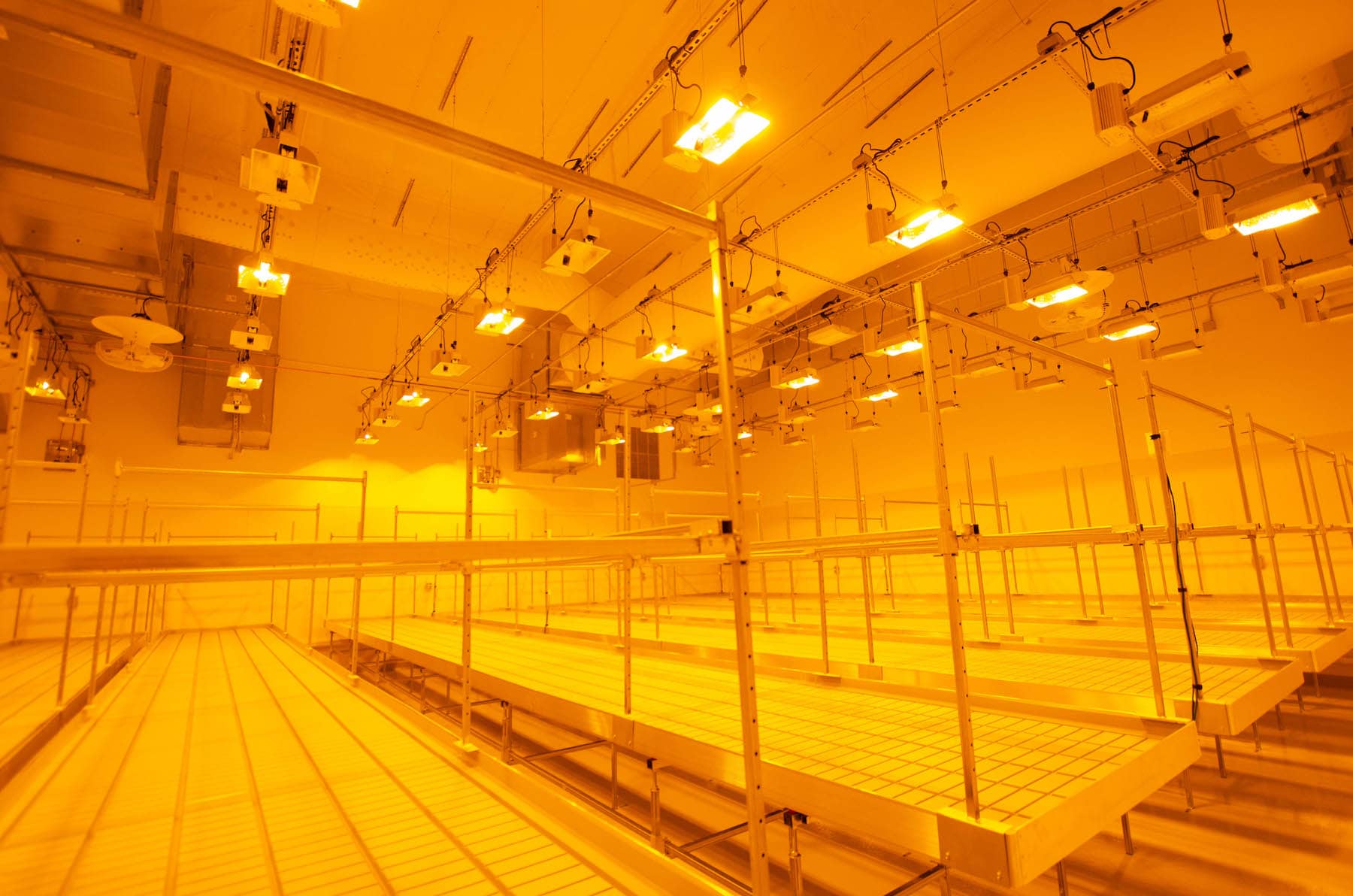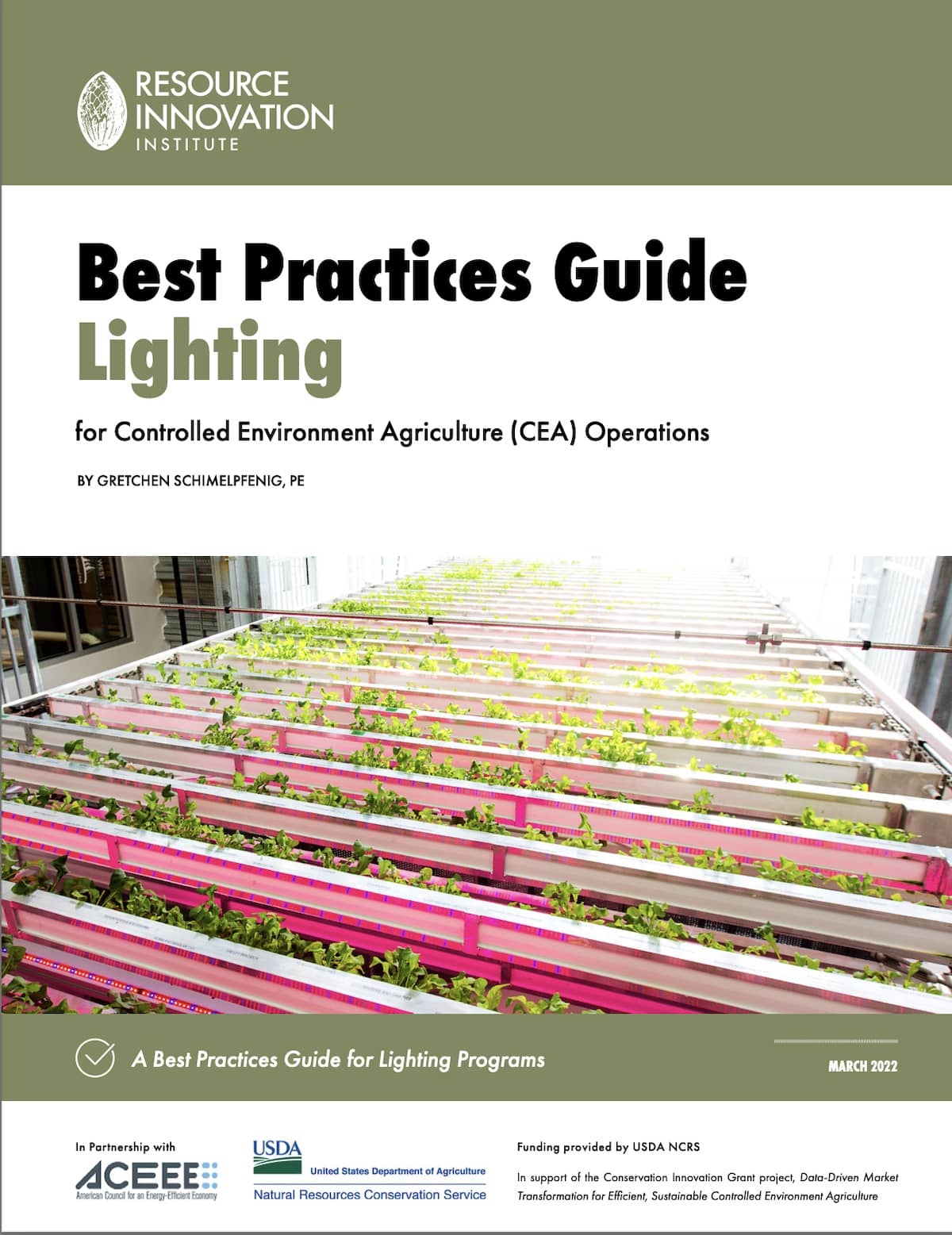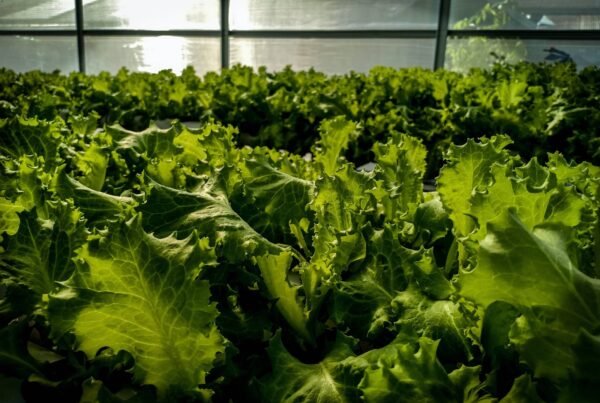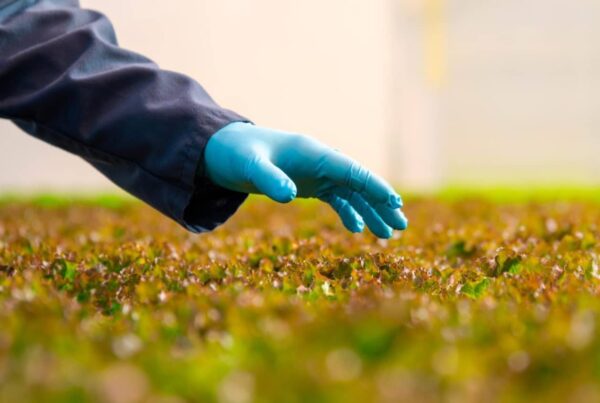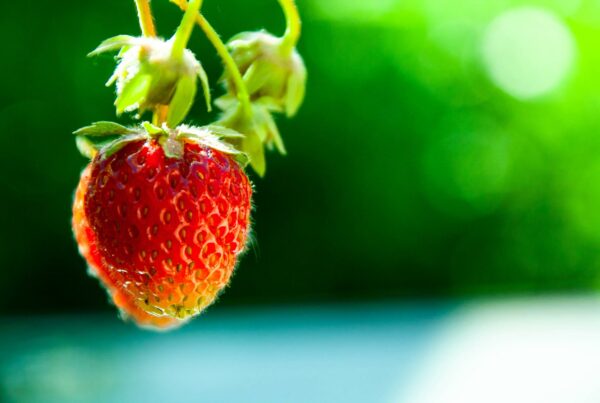Increasingly, controlled environment agriculture (CEA) operators are investing in high-efficiency technologies, including LED lighting, to control costs and remain competitive in the marketplace, as they know all too well that energy expenses are only outpaced by labor in their operational costs.
But those technological efficiencies can be negated if they are not properly implemented. For example, light spill is a phenomenon defined in RII’s Lighting Best Practice Guide as “the light delivered by fixtures used for growing that ends up on walls and walkways instead of being received by your plants.” Light spillage not only wastes energy and increases operating costs, but it can also have negative impacts on plant growth and interfere with research experiments.
Light spill is part of CEA that remains mostly understudied by academia, says Fatemeh Sheibani, a PhD candidate at Purdue University. Sheibani is studying the application of high-efficiency LED lighting fixtures in CEA, and minimizing light spillage is part of her research’s focus.
“We are measuring the real energy being expanded on LEDs and the real biomass at the end of the cropping cycles to calculate, for example, energy utilization efficiency, as we call it. So we are not dealing with modeling or estimation,” Sheibani shared.
“Canopy photon capture efficiency is one of the most important things right now because [lighting manufacturers] are reaching the limits of electrical efficiency and photon efficacy,” reports Cary Mitchell, the professor of plant physiology and horticulture at Purdue University who oversees Sheibani’s research. “But we can still do a much better job of directing and capturing the light–that’s gonna be the next wave.”
Download Resource Innovation Institute’s Lighting Best Practices Guide for more information, expert insights, and tips on everything that goes into creating an efficient and productive lighting system setup for CEA facilities.
Choose (and Install) the Right Lights
Beyond the capital investment in lighting fixtures (which can be up to five times more in for single lighting source CEA facilities compared to greenhouses), operating costs for CEA operations can be in the hundreds of thousands of dollars annually. This makes lighting fixture selection a crucial early decision in the facility design/re-design phase.
Indoor farmers cannot simply affix light fixtures designed for greenhouses into their single-source lighting operation. As Mike Zartarian, principal at Zartarian Engineering, notes, “Greenhouse lighting systems are not designed to minimize light spillage whatsoever because their first goal is to” not block the main lighting source: the sun. Instead, he advises growers to utilize high-efficiency lighting fixtures that span the width of the crop-containing bench, as those will offer the best crop coverage.
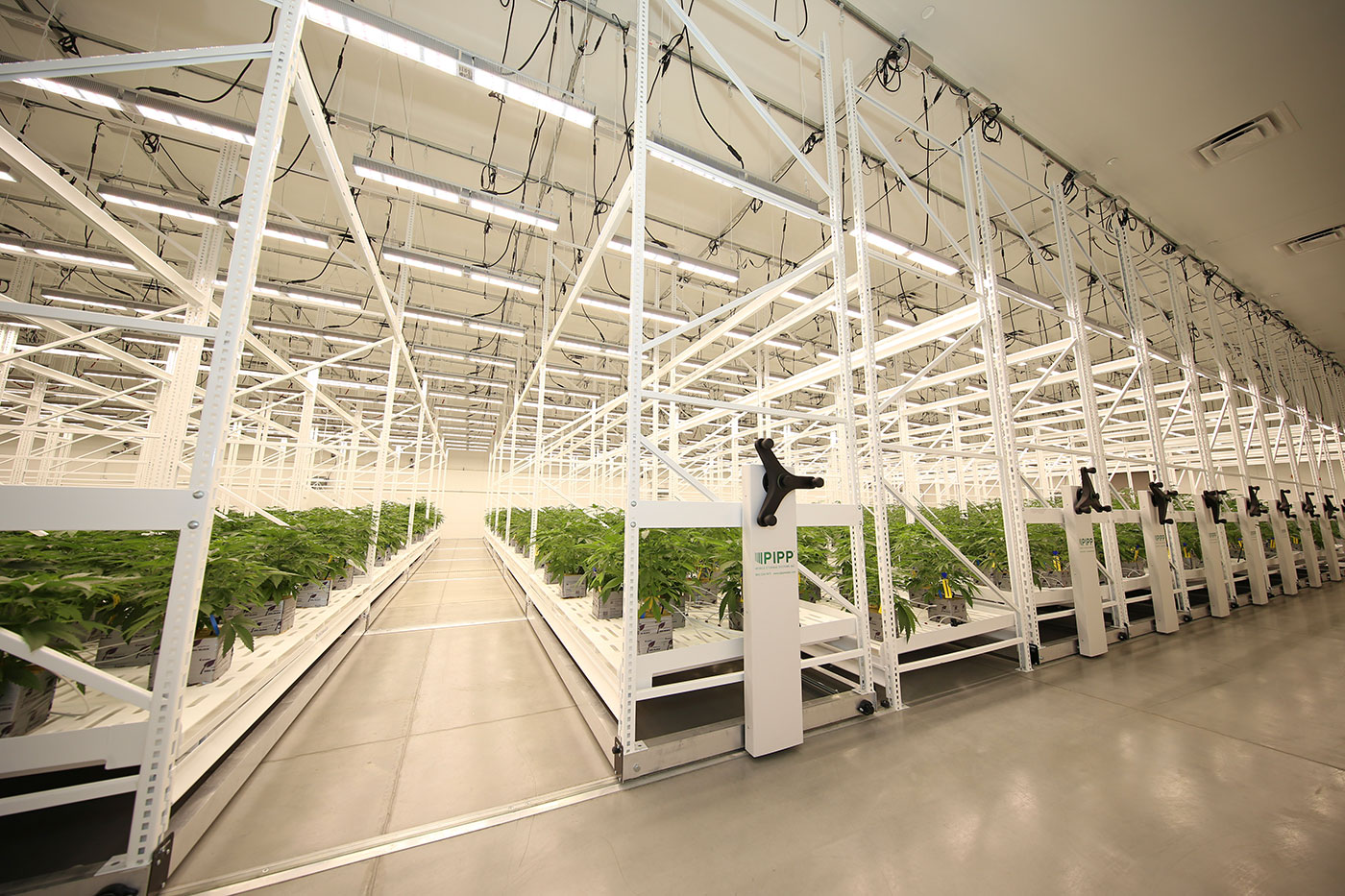
Sheibani shares that many CEA operators, especially those leveraging vertical growth chambers, will place fixtures on either side of the vertical racking system to ensure uniform light penetration and avoid uneven crop growth. As most indoor lighting fixtures have effective illumination within a 120-degree cone that emanates from the lighting source, this layout can cause a significant number of photons to hit the floors and walls rather than productive plant canopy, resulting in wasted production expenses.
Dr. Ihor Lys, founder and chief technology officer at LED lighting manufacturer Agnetix, says one way to recapture some of that unproductive photosynthetic energy is to have all surfaces coated in reflective white paint. “We want to see white floors, we want to see white walls, white ceilings, everything in the growing environment. We prefer to see that white because that lets the light bounce around, and the more it bounces around, the more chances it has to hit a leaf and do something good,” he says.
Per RII’s Lighting BPG, lighting plans can help address many of these lighting fixture layout issues before installation. “Many manufacturers of horticultural lighting offer free design assistance using lighting design software programs. Lighting plans from manufacturers provide a lot more value than a specification document…”
Minimize Wasted Space
“The biggest thing [impacting spillage] is actually the configuration of the facility,” Lys says. For example, indoor facilities that have multiple aisles between benches could reduce the unproductive surface area by leveraging rolling benches that leave one, 32-inch aisle for employees to work.
Another way to optimize a cultivation space to minimize light spillage is by adjusting the space between plants throughout their growth cycles. “This isn’t a spill problem” per se, Dr. Mitchell explains, “but when plants are young and small, and they are planted at fixed distances apart with room to grow, … photons are being wasted all the time.” By moving plants to dedicated growth chambers befitting their maturity, CEA operators can provide the right amount of spacing to avoid humidity pockets and microclimates while maximizing their lighting usage.
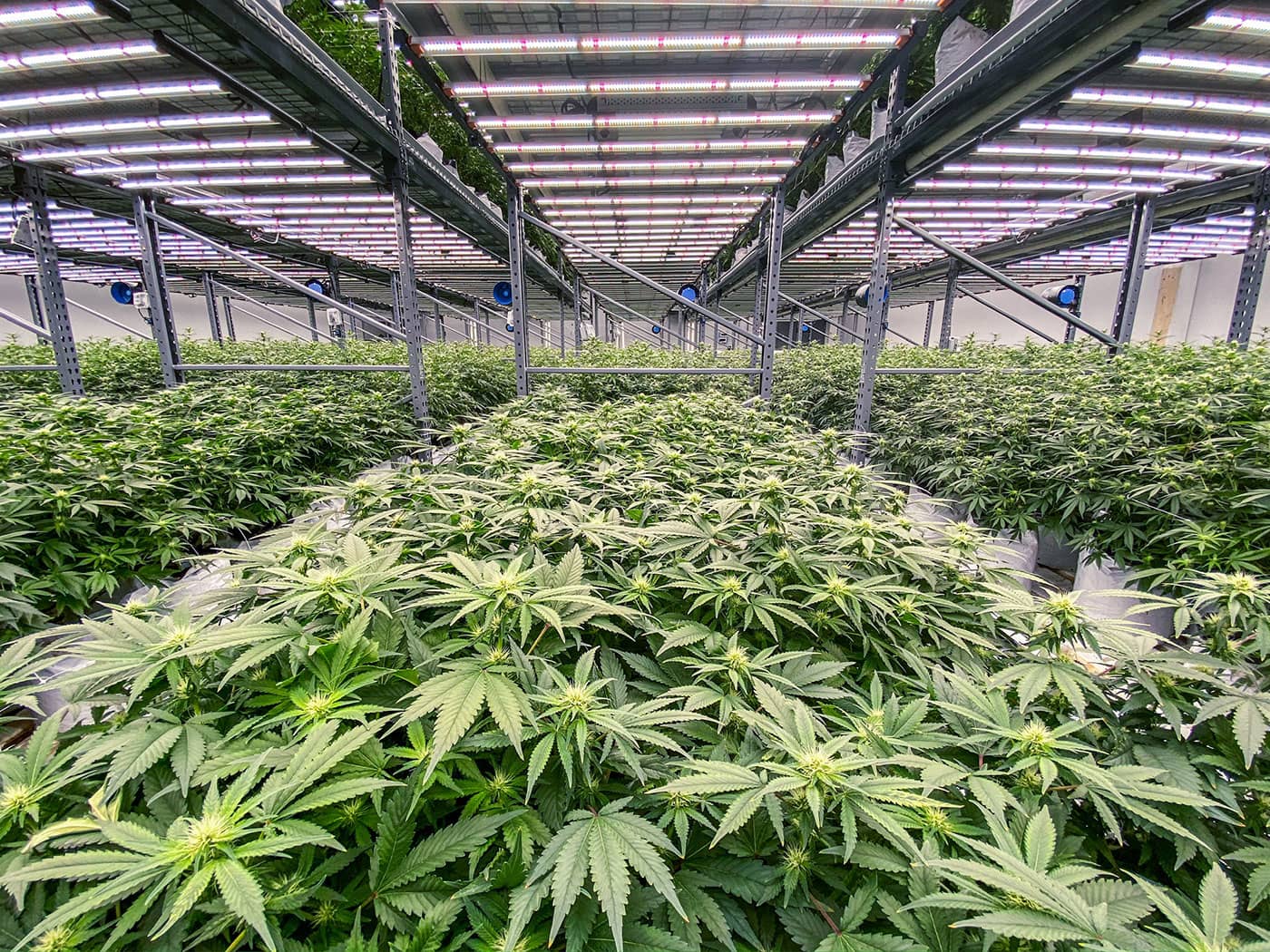
As mentioned, CEA fixtures typically emit effective light within a 120-degree cone from the light source. As a result, no facility will ever achieve a perfect light utilization score. Zartarian advises growers to aim to have no more than 20% of the cultivation light go to spillage, with the understanding that anything better than 10% is likely unfeasible for most operations.
“Once you’re getting over 20% spillage, you maybe should look at the design choices that are being made,” Zartarian says. One design choice to consider is adjusting fixture height so the spread of the light doesn’t extend as far beyond the benches and canopy. “The best way to have that happen is by keeping the lights as close to the plants as you can,” Zartarian says, adding that there can be additional benefits from a plant size and shape point of view from this practice. The advent of LEDs has enabled CEA operators to get fixtures as close as 12 inches away from the top of the canopy without any photo-bleaching or other adverse effects in most crops.
By understanding the costs and methods to control light spillage, CEA operators can begin implementing best practices for room design to minimize light spillage and improve overall lighting efficiency.
Meet Our Members
Thank you to our members who participated in this blog. Read more about their organizations below:
Dr. Ihor Lys is a renowned pioneer in LED lighting technologies. In 1997, he co-founded Color Kinetics (sold to Royal Philips in 2007 for $800m). He has published more than 200 patents and his groundbreaking work in advancing LED technology has shaped and propelled the LED lighting industry over the last two decades. In 2001, Dr. Lys received his Ph.D from Carnegie Mellon University.
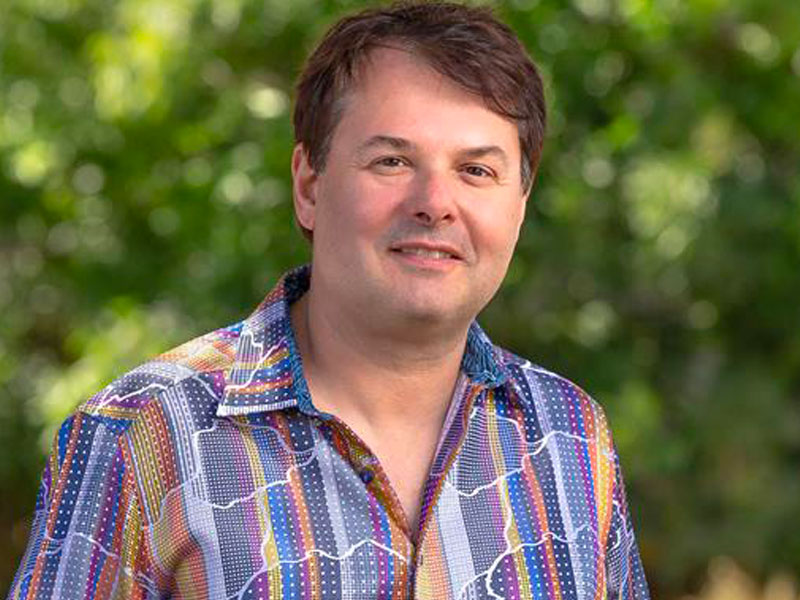
Connect with
Dr. Ihor Lys
Agnetix
Michael Zartarian is the Principal of Zartarian Engineering and Precision Ag. Leveraging in-house developed tools, Zartarian Engineering offers robust insights on plant health and system performance, providing clients with the information they need to make data-driven decisions on facility design, commissioning and operations.

Connect with
Michael Zartarian
NECANN
Fatemeh Sheibani is PhD candidate in the Department of Horticulture & Landscape Architecture at Purdue University. She works in controlled-environment agriculture lab under Dr. Cary A. Mitchell’s supervision. Her research is mainly focused on optimizing environmental conditions for indoor plant production with an emphasis on resource-use efficiency.
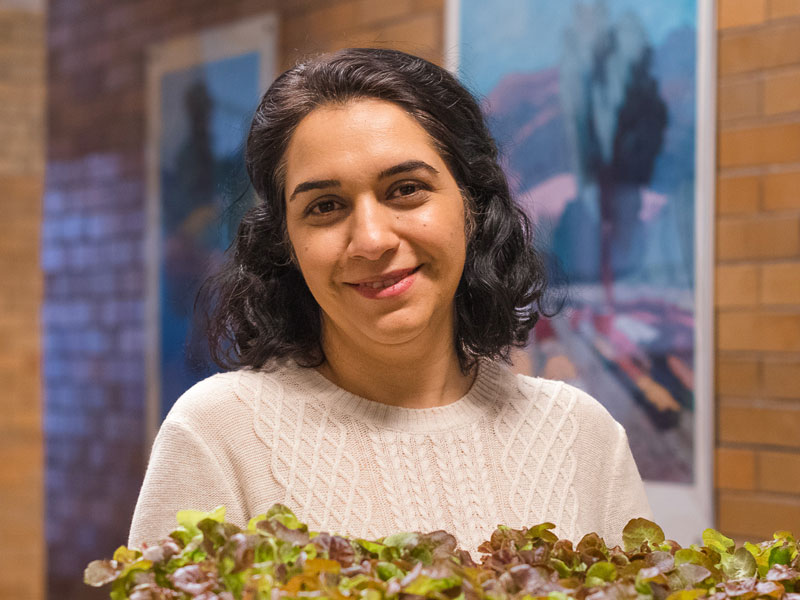
Connect with
Fatemeh Sheibani
Purdue University
Dr. Cary A. Mitchell is Professor of Plant Physiology and Horticulture in the Department of Horticulture & Landscape Architecture at Purdue University, where he specializes in controlled- environment agriculture, with current emphasis on crop productivity, profitability, and sustainability. Dr. Mitchell’s laboratory has a long history leveraging the unique properties of light-emitting diodes to minimize energy loss and improve energy-use efficiency for supplemental LED lighting in greenhouses and sole-source LED lighting for indoor farming.

Connect with
Dr. Cary A. Mitchell
Purdue University


